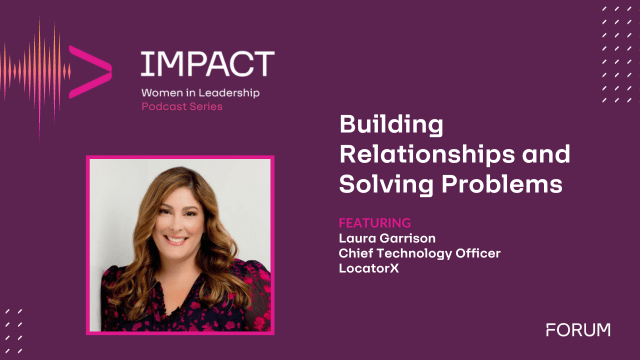This interview with Kelli Bravo, Vice President, Healthcare and Life Sciences at Pegasystems looks at low-code, some of the challenges it has served during the COVID-19 pandemic, opportunities that still exist, and advice for Government and industry moving forward.
The Pandemic
We have been spending a lot of time talking with customers about what has been happening in recent weeks and what tomorrow might bring. On the payer side we are seeing many inundated with calls about testing, questions about general health, including many just feeling the stress and wanting verification and clarification.
On the health system side we are seeing, among other stresses, the financial pressure that comes with surgeries and other procedures having to be put on hold.
In both instances, there is a need to look at other models.
Examples of Low Code Success and the Potential
One of our clients was concerned about absenteeism and the impact on its ability to manage day to day. Contractors, volunteers and other staff supporting this hospital were sick or calling in because they were concerned about coming in. The result was short-staffing in critical areas. Within 72 hours the creation of a tracker to follow absenteeism allowed them to better manage their business and staffing.
Beyond the initial tracking function there is the ability to build an employee safety and continuity aspect into the model. Using screening protocols from the CDC for instance, recommendations about whether an employee should stay home and for how long, and creating protocols for how that would all work, policy for coming back, all created consistency in messaging and a better understanding on both sides.
Another example was the government of Bavaria, which was able to develop an application for local small business grants within a few days, allowing them to solve an urgent need to get support into the hands of those who needed it quickly.
How Does Low-Code Work
Low-code brings the business and IT folds together to figure out what is needed, to lay out the steps that need to be taken. Because it creates task flows and connects data, and is based on configuring, rather than coding, it creates real time savings. Low-code is tailored to the specific need but its modules are reusable which adds scalability. Real time testing ensures the intent and end result are achieved.
The Delivery of Care
During the pandemic providers have been challenged by the new care requirements and the continuity of care where treatments were ongoing and had to continue. During the crisis the push was toward how quickly telehealth could be added.
Part of that telehealth was the face to face patient engagement but there was also telecommunication between providers around coordinated care and collaboration around decision making.
Through meeting platforms that have been adapted by teams to support teleworking, we can see the potential in adding more face to face connections, visual cues like image sharing and the potential that can bring. Low code can help providers adapt to this expanded function.
Cybersecurity
There is always a chance to improve when it comes to security and once the environment has settled, there will be an opportunity to go back and see what can be done better. When development starts with a secure base, requirements for access, secure hosting, and ecosystems of data around GDPR and HIPAA, it is grounded in good practice and protocol.
One thing we have noticed during all of this is that people are very conscious of security and privacy issues and on erring on the side of caution when they are asking questions. They are generally getting the information they need without going beyond boundaries to get that bit of information they need to provide the base care they can give.
What Comes Next?
With businesses starting to return to work there are a few things they will need to consider. It will still be important to track employee health and to put policies into place around how they are feeling, potential symptoms, and so on.
Once offices open there will need to be more cleaning, social distancing protocols, health testing and training around the new normal and what it all means.
The final component is a tracing piece, following contact between employees and movement within the building so if someone does become ill they can trace back to who may have had contact and where so appropriate messaging and additional cleaning can be implemented.
Preparing Clients for Next Steps
In Healthcare, where procedures have been limited to only the most urgent we need to think about how we handle the reopening, the flood of requests and the scheduling. There will still need to be priorities, an identification of who goes first and why. Low-code can help support both the scheduling and the business intel needed to drive decisions.
On the health plan side, all of the things that have been considered exceptions during the pandemic will need to be caught up. That includes claims, processing and billing. Now is the time to think of where those pressures will be and to put in place plans to mitigate them.
We also need to help customers prepare for the new normal. Telehealth has demonstrated such efficiencies. Coming out of this people will continue to want better access to information, more efficient access to care teams. It’s been talked about for a while that Healthcare lags behind other industries in terms of self-serve quality, personalization and proactivity. Other industries have been able to anticipate client need, to know what the client will do next. Healthcare has to get there.
Advice to Government
Automation can be a great tool in helping with the catch up. There are still a lot of legacy applications that don’t connect to APIs, that require a cut and paste from one application to the next. Bots can be used easily for that. Automation can also be used for things like procedure permissions for health plans, or authorizations for prescriptions based on documented drug use. Email bots using natural language processing can manage emails, or develop emails response so they are largely completed and will take a human just a few steps to complete.
There is a lot of legacy still to be wrapped and renewed. Where there is the opportunity to take the repetitive, tedious tasks away from staff so they can focus on the more challenging parts of their work, the parts they may enjoy more, they are happier and better able to tackle those bigger jobs, the bigger questions.
This crisis has taught people that they can break down silos, break down policy barriers to get things done faster. We need to take that spirit forward. We have seen agencies collaborating in new ways, hospitals sharing bed space, equipment and teams that has transformed capability. There has been benefit in all of that and proven successes that we must look to maintain.
Government has been able to lean in, to be incredibly flexible in their thinking, to bring creative and innovative out of the box approaches to solve this massive challenge. There is no reason that cannot continue.
Advice to Industry
Industry too has come together, has set aside silos between technologies, between companies to come together. That will be our way forward, embracing technologies, removing silos and finding new ways to work together to continue to transform Healthcare.
About Kelli Bravo
 Kelli Bravo brings to Pega her successful experience with payer, provider, and life sciences technology and operations to lead the Healthcare and Life Sciences CRM industry team. Prior to Pega, Kelli was the VP of Product Marketing at Casenet, and has held executive management positions at McKesson, Microsoft, Epocrates, and Athenahealth.
Kelli Bravo brings to Pega her successful experience with payer, provider, and life sciences technology and operations to lead the Healthcare and Life Sciences CRM industry team. Prior to Pega, Kelli was the VP of Product Marketing at Casenet, and has held executive management positions at McKesson, Microsoft, Epocrates, and Athenahealth.
About Pegasystems
Pega is the leader in cloud software for customer engagement and operational excellence. The world’s most recognized and successful brands rely on Pega’s AI-powered software to optimize every customer interaction on any channel. Pega’s low-code application development platform allows enterprises to quickly build and evolve apps to meet their customer and employee needs and drive digital transformation on a global scale.












